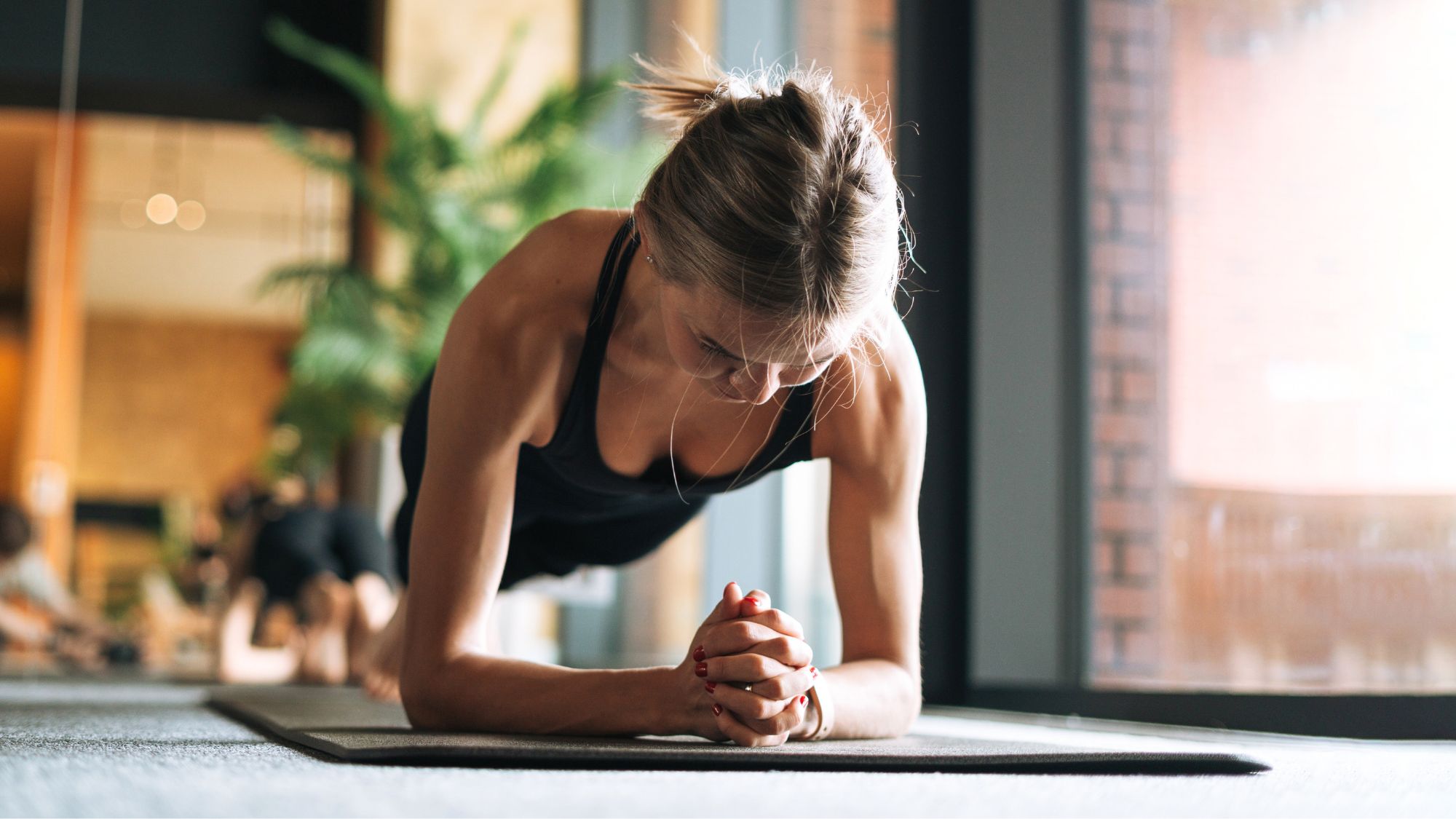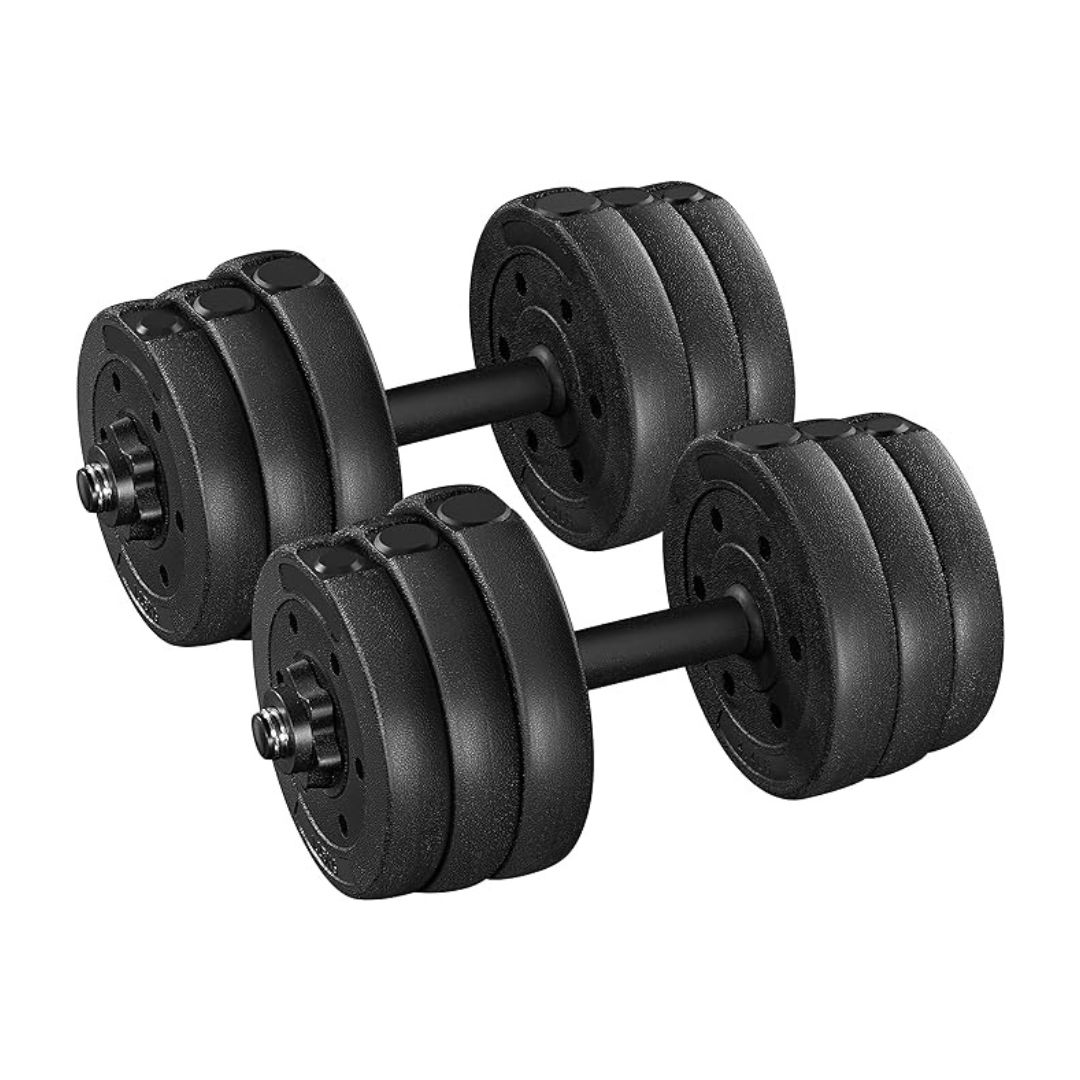Not seeing progress with your strength training workouts? This simple trick will maximise your results
Aka, the key to your fitness gains.


If, like 19% of women who participated in the recent PureGym UK Fitness Report, you're motivated to move by your desire to build muscle, then it’s important that you’re clued up on training for strength vs hypertrophy. Because, while we speak broadly about the many muscle-related benefits of strength and resistance training, there are some specifics to be aware of if your intention is to gain size.
Take hypertrophy, for example, a term that refers to the increase in size or growth of muscle tissue and cells. “It occurs when the muscle fibres undergo stress or damage during resistance training, leading to an adaptation response where the muscle fibres repair and rebuild themselves, resulting in an increase in muscle size,” explains personal trainer Aimee Victoria Long.
While weight training, by nature, will help you to build strength and muscle mass, there are ways to formulate your workouts to maximise your results, depending on your goal. Scratching your head and wondering, what is strength training? In short, any workout that utilises weights, like dumbbells or kettlebells, with the benefits of strength training spanning improved muscle mass, metabolism and more.
Sound good? We thought so. Keep scrolling for your extensive guide to training for hypertrophy and, in turn, muscle gain. Keen to read more on the subject? Don't miss our guides to strength training for beginners, strength training every other day and low impact strength training, while you're at it. More of a home workout kind of person? Strength training at home can be seriously effective, too.
Learning the difference between training for strength vs hypertrophy might be the key to fitness gains
What is a hypertrophy workout?
Resistance training, along with progressive overload, is the bones of training for strength or hypertrophy. The main difference between strength training and hypertrophy training lies in the rep and set ranges required to achieve each goal, as well as the energy you use in session.
“For strength training, the ideal rep range is one to six repetitions per set, with two to six sets per exercise,” Long says. In addition, the recommended percentage of 1RM - aka how hard you go - is around 85-100%. So, you’re lifting heavy – almost at maximum capacity – for a low number of reps. On the other hand, for hypertrophy training, research indicates the ideal rep range is six to twelve repetitions per set with short rest intervals of 60 seconds, and three to six sets per exercise. The recommended percentage of 1RM is around 65-85%. In short, it's the difference between lifting heavy for fewer reps, or lifting lighter for a higher number of reps.
"The hypertrophy rep and set range is considered optimal for muscle growth because it strikes a balance between muscle tension, metabolic stress, and muscle damage," explains Long. "When you perform resistance exercises within this rep/set range, you create sufficient tension in the muscle fibres and, in turn, the tension stimulates the muscle fibres to adapt and grow." A higher number of repetitions allows for more time under tension, which Long says leads to greater muscle fibre recruitment and activation.
Celebrity news, beauty, fashion advice, and fascinating features, delivered straight to your inbox!
Additionally, this specific rep and set range induce metabolic stress in the muscles. "Metabolic stress refers to the accumulation of metabolic by-products, such as lactate, during exercise," says Long. "These by-products stimulate the release of growth factors and promote muscle hypertrophy."
A moderate rep and set range also help to generate muscle damage, which is necessary for muscle growth, Long says. "As you perform exercises with challenging weights and repetitions, it causes micro-tears in the muscle fibres. The body repairs these tears, leading to muscle growth and adaptation."
Exercise selection also looks a little different when you’re training for muscle growth. While compound exercises such as squats, deadlifts and bench presses are prioritised when training for strength, both compound and isolation exercises – which target specific muscle groups – are utilised when hypertrophy is the goal.
What are the benefits of training for hypertrophy?
Strength training, in general, has numerous benefits. “It helps improve overall physical performance, increases muscle mass, enhances bone density, and boosts metabolism,” says Long. “This type of training is ideal for so many different individuals looking to improve their functional strength and overall athleticism.”
Additionally, she says strength training can be great for people going through menopause or looking to future-proof their body for old age as it helps to prolong your ability to do everyday tasks, like climbing stairs and picking things off the floor.
Hypertrophy training, specifically, also has advantages beyond increased muscle mass. “These include improved muscular endurance and enhanced metabolic rate,” says Long. “It’s a type of movement for everybody and anybody.”
What’s the best way to build muscle?
So, rep and set counts aside, how do you actually go about building muscle? Long says it all starts with consistency. “Aim for a minimum of three to four workouts per week, allowing for adequate recovery time between sessions,” she advises. Getting ample rest in between sessions is crucial for allowing your muscles time to recover and rebuild post-workout, which means you’re prepared for your next training sesh.
Long recommends including a mix of compound exercises, such as squats, deadlifts and bench presses, with isolation exercises, like bicep curls and lateral raises, into your programme, and implementing progressive overload by increasing the level of challenge (through adjustments to load, tempo, intensity, and so on) over time. She advises working with a qualified personal trainer, if the option is available to you, to create a bespoke plan that suits your goals and personal requirements.
Additionally, there are some lifestyle elements to consider when the goal is to grow muscle. “Ensure you're consuming enough calories and protein to support muscle growth, and prioritise quality sleep and rest to allow your muscles to recover and grow,” Long says. Your ideal daily caloric and protein intake will depend on many factors, so it’s best to ask a trainer or nutritionist to calculate this number for you, if possible.
“Remember, consistency, proper form, and patience are key when it comes to building muscle,” Long emphasises. And, of course, you'll only ever stick to workout plan if you genuinely and enjoy it and look forward to your sessions, so bottom line: working out what works for you and your body is essential here. Now, question: which training style will you be trying?
Shop MC UK approved fit kit now:

Abbi Henderson is a freelance journalist and social media editor who covers health, fitness, women’s sport and lifestyle for titles including Women's Health and Stylist, among others.
With a desire to help make healthcare, exercise and sport more accessible to women, she writes about everything from the realities of seeking medical support as a woman to those of being a female athlete fighting for equality.
When she’s not working, she’s drinking tea, going on seaside walks, lifting weights, watching football, and probably cooking something pasta-based.


